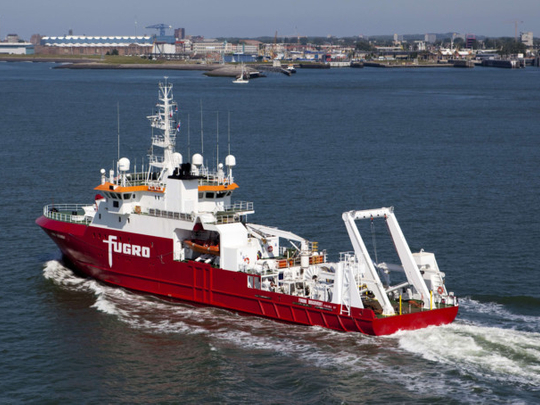
The search for Malaysia Airlines Flight 370 resumed last Monday roughly 1,100 miles (1,770 kilometres) off the Australian coast. The task is daunting: Searchers are focusing on 23,000 square miles of seabed that had never been mapped in detail before this summer, at depths of up to four miles. Nonetheless, the Australian Transportation Safety Board, the agency leading the hunt, as well as airline safety experts have expressed cautious optimism that the plane will ultimately be found.
But what if it’s not? The question is awkward and uncomfortable, in part because it implies that friends and families of lost passengers might never receive the closure that they seek. Yet it’s important to ask, not least because of the potentially corrosive effect an unsolved mystery could have on the aviation industry’s well-deserved reputation for safety. One need only look at the panicky abandonment of Malaysia Airlines by passengers (compounded by the loss of another Malaysia Airlines jetliner, shot down over Ukraine) to get a sense of how drastically a loss of confidence might impact aviation business.
Thus far, there’s no reason to believe that the fallout from Flight 370’s disappearance has been anything but local. According to the International Civil Aviation Organisation, scheduled air passenger traffic should grow by 6 per cent in 2014. Even if the search is eventually abandoned, it’s unlikely that the news would have big repercussions on global traffic. Indeed, even Malaysia Airlines is unlikely to be hurt: By that point, the airline will have been restructured and might even be operating under a new name.
But that’s not to suggest airlines, regulators and passengers should exhale quite yet. The public’s anxiety about Flight 370 has always centred on the idea that a Boeing 777 can apparently fly for hours into the night without being tracked. Even if the plane is eventually found, the circumstances of its disappearance won’t change. And if the mystery lingers, demands to improve the tracking of flights are sure to intensify.
Free service
There’s no lack of options in terms of improved tracking technology, as revealed at a US National Transportation Safety Board meeting on airplane-locator technology that opened last Tuesday in Washington. Mobile satellite communications provider Inmarsat is offering airlines a free service that would ping an airplane every 15 minutes, and would require no new equipment. Other tracking systems capable of more frequent check-ins via satellite will require additional equipment and expenses that some airlines may not be willing to bear. (Iridium, a rival to Inmarsat, estimates that outfitting an airplane properly could cost more than $100,000 (Dh367,000).) Nonetheless, several airlines have started using new technologies already, and others are likely to join soon.
Improved tracking should be mandatory. Equally important, those systems must be tamper-proof. According to the Malaysian government and others, someone on board Flight 370 manually deactivated the plane’s flight transponder once it was in the air. In other words, even if the airliner had been equipped with the world’s best and most advanced flight tracking system, it could still have disappeared.
Pilots, who are accustomed to having complete control of every instrument in their cabin, have already expressed reservations about such a proposal. But those concerns shouldn’t be allowed to block what might be the most important safety upgrade that comes out of this tragedy. Ultimately, whether or not Flight 370 is found, the real threat to the global aviation industry will arise if a similar accident happens in the future — especially if nothing has been done to prevent it. Taking steps to make sure that never happens should be a global aviation priority.
— Washington Post
Adam Minter, an American writer based in Asia, is the author of Junkyard Planet: Travels in the Billion Dollar Trash Trade.










